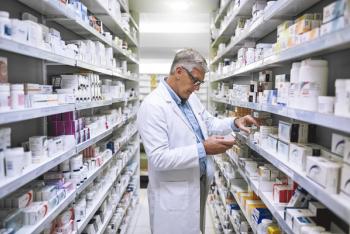
- Volume 0 0
Rx Drug Abuse: An Escalating Problem with Multiple Causes
Dr. Zanni is a psychologist and health-systems specialist based in Alexandria, Va.
Ed complains to his brother Joethat stress has been keeping himawake. Joe sympathizes with hisbrother, offering him some sleep sedatives.?I had the same problem, and mydoctor prescribed these for me. Theyreally work. Let me give you some.?
Joe and Ed unknowingly are engagingin a growing epidemic of substanceabuse, albeit one that appears to besocially accepted?-prescription drugabuse (PDA).
PDA now surpasses illegal substanceabuse: in 2003, the 15 million Americansabusing prescription drugs far outnumberedthe 6 million abusing illicit streetdrugs.1 PDA is most common among youngadults (aged 18-25),2 although the highestgrowth rate is seen in adolescents,increasing from 700,000 in 1992 to 3.2million in 2003.1 Adolescent PDA canescalate rapidly to other abuses: youngPDA abusers are twice as likely to abusealcohol, 5 times more likely to use marijuana,and 15 times more likely to useEctasy1 (see Table 13-6).
Defining PDA
Historically, PDA was defined as prescriptiondrug use for nonmedical purposes,with lifetime prevalence estimatedat 20%.7 Today, PDA emerges in adifferent form?-practicing medicinewithout a license. A sizable number ofpeople, especially those in their 20s and30s, are skeptical of physicians, especiallypsychiatrists, and conduct their ownresearch on conditions and treatmentsand act accordingly.8 Their goal is simplyto feel better, either psychologically orphysically, and not to get high or supportan addiction. Those participating in PDAview self-medication as efficient andappropriate, consistent with self-empowerment.
One has to look only at Internet chatterto realize the level of sophisticationunderlying PDA; people discuss dosing,side effects, and treatment alternativesfor a myriad of conditions. Some freelyoffer their physicians' recommendationsand/or their own experience with theagent. Engaging in this behavior areespecially those with psychiatric conditions,including anxiety and depression,8and the medications discussed are notbenign (eg, risperdone).8Reasons for the Increase in PDADirect consumer advertising is partlyto blame, often creating the impressionthat medication is the solution for life?sdaily problems. Because agents are FDA-approved,people mistakenly believe thatthey are safe to use. The proliferation ofillegal Internet pharmacies eases access;one survey found that 84% of onlinepharmacies did not require a prescriptionfor selling controlled agents.6 Other factorsfueling prescription abuse includelack of education among professionals,overprescribing, doctor shopping, ineffectiveprescription-monitoring programs,policies that are more reactivethan proactive in nature, and society?sgrowing acceptance of pill sharing.4Drugs with High Risk for Abuse
Opioids, central nervous system depressants,and stimulants top the list ofabused agents. Anabolic steroids, whilenot topping the list, are pursued by athletesand body builders. One study, forexample, found that 2.6% of high schoolseniors used anabolic steroids in 20069(see Table 210).
Drug-monitoring Programs
Several programs exist targeting prescriptionabuse. The Drug EnforcementAgency (DEA) is actively involved in prescription-monitoring programs. It haslaunched a toll-free international hotline (877-RxAbuse) for people to anonymouslyreport illegal drug diversion,including suspicious Internet pharmacies.6
The National All Schedules PrescriptionElectronic Reporting Act of2005 provides for the creation of a controlledsubstance monitoring program ineach state. Some states now allowphysician and pharmacist access toonline utilization history, and data suggestreduced prescriptions per capitafor pain relievers and stimulants.4Although this monitoring is hailed bysome as reducing prescription abuse viadoctor shopping, some argue that thedata also may indicate that cliniciansmight be reluctant to prescribe theseagents even when they are appropriate,fearing public scrutiny.
The Synthetic Drug Control Strategytargets diversion at the individual level,including doctor shopping, prescriptionfraud, using illegal online pharmacies,and distributing or selling pills to others.This program seeks to reduce PDA by15% from 2005 to 2008.4Preventing PDA
Most national programs primarily supportlaw-enforcement efforts, not thoseof health care professionals. Expertsagree that increased education is neededat all levels of health care.4 Mostphysicians, for example, assess patientsfor alcohol abuse, but more than 40% failto query patients about PDA.11 Considerthe following statistics with regard topharmacists:
- Only half of surveyed pharmacistsreceived training in identifying drugabuse or drug diversion
- 33% never review a patient?s previoushistory for controlled substances
- 61% do not ask whether patients aretaking any other controlled medicationswhen dispensing a controlledsubstance
- 25% do not regularly validate thephysician?s DEA number1,4
Despite hectic workloads, screening ofprescriptions and patients by pharmacistsis crucial. A high risk for potentialabuse exists even when patients legitimatelyreceive opioids for pain management:their lifetime estimated prevalencefor substance abuse disordersranges from 36% to 56%.4
Counseling sessions should provideclear information and should emphasizethat medications are prescribed basedon individual needs and that patientsmust not share medications with others,even if those persons were previouslyprescribed the same agent and dose.Pharmacists must stay vigilant for suspiciousor altered prescriptions?-a problemthat diminishes with electronic prescribing.Pharmacists should reviewonline utilization data, if available, fordoctor or pharmacy shopping.
When pharmacists detect PDA, theyshould report it according to local regulations.They should warn patients notto stop an agent abruptly, emphasizingthat medical guidance and supervisionare required. If PDA has progressed tomaintenance addiction to opioids, barbiturates,or benzodiazepines, abruptwithdrawal can be life-threatening.Addicted patients require superviseddetoxification, followed by behavioralor cognitive?behavioral therapy.Final ThoughtCurbing prescription abuse requiresmultifaceted interventions. Increasedvigilance at the pharmacy counter is acritical component of curbing PDA.Toward that objective, pharmacistsshould include prescription diversion andabuse in their annual continuing educationselections.References
1. Kirn T. Prescription medication abuse by teens soars. Fam Pract News. 2006;36:26.
2. Office of National Drug Control Policy, Executive Office of the President. Teens and prescription drugs: an analysis of recent trends on the emerging drug threat. February 2007. Available at:
3. National Institute on Drug Abuse. Trends in prescription drug abuse. Available at:
4. Manchikanti L. National drug control policy and prescription drug abuse: facts and fallacies. Pain Physician. 2007;10:399-424.
5. Dunham W. Prescription drugs a problem on U.S. campuses. Reuters Health Information. March 2007. Available at:
6. Office of National Drug Control Policy. Prescription drugs. Available at:
7. Medline Plus. Prescription drug abuse. Available at:
8. Harmon A. Young, assured, and playing pharmacist to friends. New York Times. November 16, 2005.
9. National Institute on Drug Abuse. NIDA InfoFacts: Steroids (Anabolic-Androgenic). Available at:
10. National Institute on Drug Abuse. Selected prescription drugs with potential for abuse. Available at:
11. McCarthy M. Prescription drug abuse up sharply in the USA. Lancet. 2007;369:1505-1506.
Articles in this issue
over 18 years ago
Calming the Symptoms of Menopauseover 18 years ago
Zoster Vaccineover 18 years ago
pharmacy TECHNOLOGY productsover 18 years ago
health-systems PRODUCT newsover 18 years ago
can you READ these Rxs?over 18 years ago
can you READ these Rxs?over 18 years ago
Generic Times Product Newsover 18 years ago
compounding HOTLINEover 18 years ago
Human HRT Leads Compounding Renaissanceover 18 years ago
Prescription-overdose Deaths Surpass Car-accident DeathsNewsletter
Stay informed on drug updates, treatment guidelines, and pharmacy practice trends—subscribe to Pharmacy Times for weekly clinical insights.

















































































































































































































